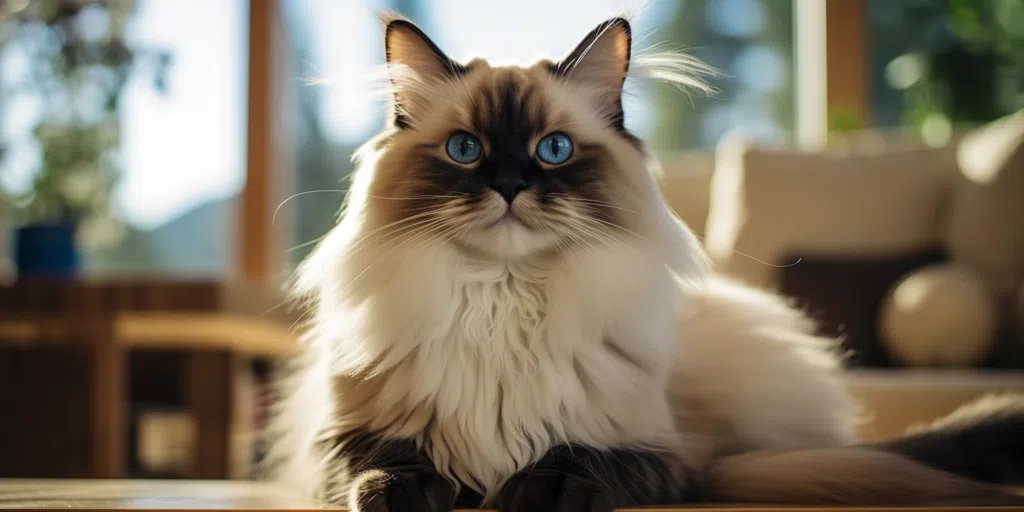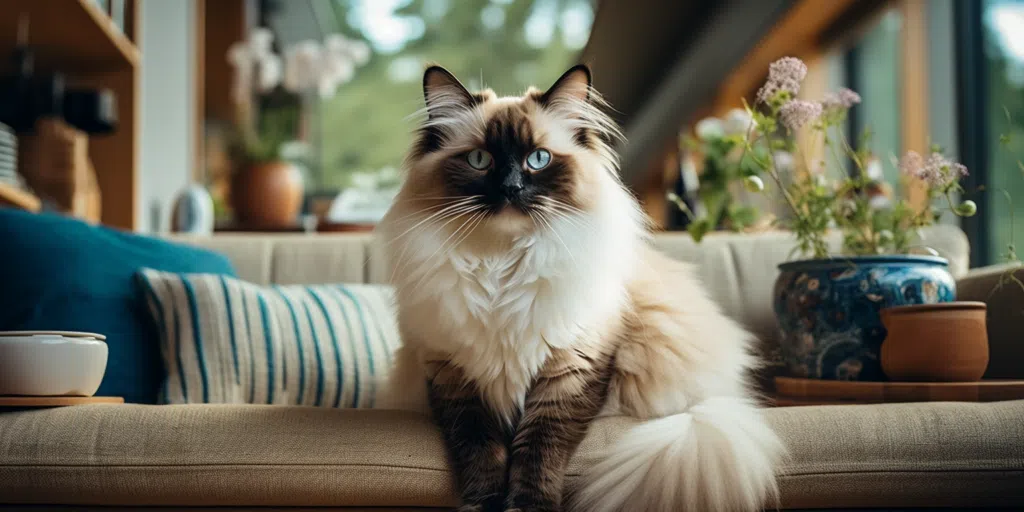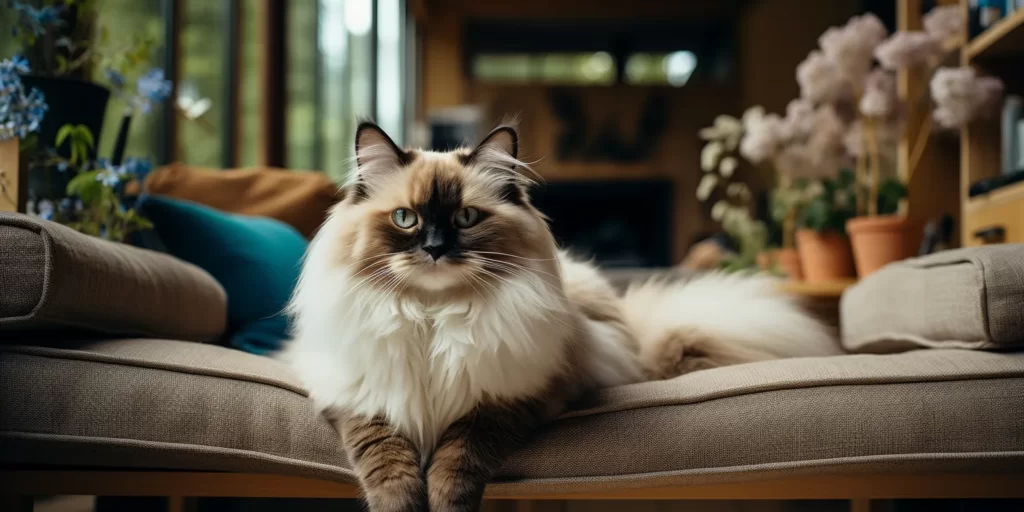Choosing a Ragdoll cat as a pet marks the beginning of an extraordinary companionship filled with affection and grace. One of the most fascinating choices you’ll encounter in the adoption process revolves around the gender of your Ragdoll – whether to go for a male or female. In this blog, we delve into the nuances of the Male vs Female Ragdoll, providing you with detailed insights to make the best decision for your home. Each gender offers distinctive traits and behaviors that might align differently with your lifestyle and preferences.
Before bringing home a Ragdoll, it’s vital to understand the inherent differences between the genders to ensure their personalities and care needs complement your expectations. The Male vs Female Ragdoll comparison we’re going to explore doesn’t just boil down to size or behavioral tendencies; it also encompasses aspects such as their interaction with other pets, grooming needs, and lifestyle adjustments. So, embark on this journey with us as we unveil the unique characteristics that define male and female Ragdolls.

Visual Differences
| Male | Female | |
|---|---|---|
| Average height (adult): | 9-11 inches | 8-10 inches |
| Average weight (adult): | 12-20 pounds | 8-15 pounds |
| Lifespan: | 12-15 years | 12-15 years |
| Exercise: | Moderate | Moderate |
| Grooming needs: | High | High |
| Very Friendly: | Very Frienly | Very Friendly |
| Other pet-friendly: | High | High |
| Trainability: | Moderate | Moderate |
Male Ragdoll Overview
The Male Ragdoll is known for its impressive size and grandeur. Often referred to as gentle giants, these cats carry themselves with a regal poise that is as charming as it is captivating. Not only do they boast larger physical dimensions than their female counterparts, but male Ragdolls also display a tremendously affectionate nature. They tend to be incredibly sociable, enjoying the company of their human families and often following them from room to room. The male Ragdoll’s personality is frequently characterized by a laid-back demeanor, making them excellent lap cats and companions for those seeking a cuddly feline friend.
When it comes to their social dynamics, male Ragdolls typically exhibit a playful side that lasts well into their adult years. Their playfulness is matched by a curious yet calm mindset, allowing them to be fantastic playmates for children and adults alike. However, their size may pose a challenge in smaller living spaces, and it’s essential to ensure they have enough room to move around and explore without being restricted. As for their attachment, male Ragdolls are known to form deep bonds with their owners, demonstrating loyalty and often preferring a single person as their favorite in the household.
Training A Male
Whilst Ragdolls, in general, are known for their trainability, males can especially enjoy interactive play sessions which double as covert training exercises. Reinforcing commands with treats and praises works well with them. Teaching them to fetch or use scratching posts instead of furniture can be achieved with consistent positive reinforcement. Due to their sociable nature, male Ragdolls can also be introduced to walks on a leash with proper training – a safe way for them to explore the outdoors and get some exercise.
Health & Care
Maintaining a male Ragdoll’s health requires regular vet checks to monitor for common breed-specific issues such as hypertrophic cardiomyopathy (HCM). Their dense fur demands frequent grooming – at least a few times a week – to prevent matting and hairballs. Pay extra attention during seasonal changes when they might shed more. Also, due to their larger size, it’s crucial to monitor their diet and weight to prevent obesity which can lead to further health complications.
Suitable for:
Male Ragdolls are suitable for families seeking an interactive and friendly cat. They are ideal for homes that can offer spacious environments where their size won’t be inhibitive. For individuals or families who spend time at home and can provide companionship, male Ragdolls thrive on attention and engagement, making them perfect for someone looking for more than just a pet but a true member of the family.

Female Ragdoll Overview
Female Ragdolls possess their own set of distinctive qualities. Generally smaller in size, they easily adapt to various living situations including apartments or houses with limited space. Their beauty and elegance are matched by an independent streak that gives them a sense of mystery. This doesn’t mean they aren’t affectionate – female Ragdolls will happily cuddle when they’re in the mood, often seeking out their owner’s lap after busy periods of playing or exploring.
Their maternal instincts can sometimes mean that female Ragdolls display more nurturing behaviors. This could manifest in grooming other pets or looking after toys as if they are kittens. Females tend to be more discerning about whom they give their affection to but once they build a bond, it is strong and enduring. When it comes to temperament, female Ragdolls are no less loving than males; however, they may not always seek constant attention and may appreciate some alone time.
Training A Female
Training a female Ragdoll includes many of the same practices used with males but often requires a touch more patience. They can be slightly more independent but still respond well to positive reinforcement techniques such as treats and praise. Providing interactive toys can stimulate their intelligent minds and keep them from boredom-related behavioral issues. Litter box training usually comes easily to Ragdolls if started from an early age.
Health & Care
Aside from the regular grooming that all Ragdolls need due to their long fur, females should be closely observed for changes in behavior that may signal health issues. Regular veterinary check-ups are vital, particularly focusing on the prevention or early detection of common problems like urinary tract infections which females may be prone to. A balanced diet is critical for maintaining optimal health without overfeeding, which is important since obesity can cause serious health issues.
Suitable for:
Female Ragdolls are particularly well-suited for individuals or families who appreciate a cat with a bit of independence without sacrificing affection when it’s offered. Their adaptable size makes them excellent pets for smaller living spaces. For those desiring the elegant beauty and graceful presence of a Ragdoll but with perhaps less constant interaction than males require, females could be the perfect option.
Which One Is Right for You?
When deciding between a Male vs Female Ragdoll, consider your lifestyle, household environment, and what you’re looking for in a feline companion. Do you want a larger cat who craves attention and interaction, or would you prefer a slightly more independent character who still enjoys affection on her terms? Are you able to dedicate time to frequent grooming needed by both genders? Can your living space accommodate the potential larger size of a male?

Conclusion
The choice between adopting a male or a female Ragdoll ultimately depends on personal preferences and compatibility with your lifestyle. Both genders bring immense joy and unique attributes that make them wonderful pets. Males often favor constant companionship while females may seek moments of solitude interspersed with affectionate interactions. Whatever your decision may be, welcoming a Ragdoll into your home is sure to enrich your life with the undying love and majestic beauty that this breed is celebrated for.